Description
Overcoming Cardiovascular Disease
The Promise of Photodynamic Therapy and Other Innovative Treatment Options for Heart Disease and Cardiovascular Problems
Heart disease is a leading cause of death worldwide. More people die annually from cardiovascular disease than from any other cause. It is by far the number one cause of death in the United States, Europe, Russia, as well as many other developed countries. When we speak of heart disease, we are typically referring to some blockage in the blood supply to the heart. Cardiovascular disease is a broader term that refers to any disorder affecting the heart and blood vessels.
Although many different causes of cardiovascular disease have been identified, clogging of the arteries (atherosclerosis) and high blood pressure (hypertension) are the main driving forces or sets of mechanisms behind these conditions.
Overcoming Cardiovascular Disease: The Promise of Photodynamic Therapy and Other Innovative Therapies highlights a new approach to the treatment and management of cardiovascular disease, one rooted in the astounding therapeutic potential of Photomedicine (light-based medicine). Though the healing applications of light date back many centuries, it is only within the past few decades that high-tech developments in laser technology have enabled the medical profession to realize the true healing potential of light.
Overcoming Cardiovascular Disease is divided into four parts: (1) Understanding and Treating Cardiovascular Disease; (2) The Photodynamic Treatment of Cardiovascular Disease; (3) Promising Research Directions; and (4) Lifestyle Medicine to Improve Long-Term Control and Prevention of Cardiovascular Disease.
Some facts presented in this book may come as a surprise. For example, the ebook points out that even young people with seemingly healthy hearts may already have a substantial degree of clogging of the arteries. Between 10%–20% of all teenagers in developed countries may have some atherosclerosis. These teens show no symptoms of cardiovascular problems, and very few have severe narrowing in any arteries. Even so, they show early signs of cardiovascular disease based on special tests.
Another key insight concerns the role of chronic inflammation, now widely regarded as a major driving force behind atherosclerosis and the evolution of cardiovascular diseases. Though fatty foods and smokingg are usually cited as major contributors, chronic inflammation per se could have an even bigger role. Such persistent inflammation is now though to underlie all the major chronic diseases of our modern world, including type 2 diabetes, chronic kidney disease, Alzheimer’s disease, and cancer.
After discussing conventional treatments for various heart-related ailments, the ebook explores the role of photodynamic therapy (PDT) for this condition. Here’s an excerpt from the ebook:
“In order to understand the use of PDT for heart disease and cardiovascular issues, it is helpful to review the basic process of atherosclerosis, the slowly progressive condition that begins at an early age and drives the development of coronary heart disease (CHD). Atherosclerosis involves an imbalanced metabolism of body fats (lipids) along with chronic inflammation within the walls of the arteries, which are the blood vessels that carry blood to the heart.[1] In atherosclerosis, cholesterol-laden plaque builds up inside the arteries, gradually thickening the artery walls. The narrowing of those blood vessels makes it easier for clots to form, and blood clots forming around the plaque may cause the artery to narrow even faster.”
“The overall effect of this process can be to limit and eventually block blood flow to the region of the heart supplied by the artery. Chest pain, or algia, can result when lack of blood flow “starves” some of the heart muscle. Heart attack, or myocardial infarction, occurs when the blood flow is completely blocked, usually due a blood clot forming over a plaque that has ruptured. Insufficient blood flow to the heart is responsible for about seven million deaths from heart disease per year around the world, according to the World Health Organization.”
“Despite the considerable progress that has been made toward preventing and treating CHD, there are still many obstacles to a long-term cure for anyone who has developed the condition and then undergone surgery. One major problem is the tendency for the arteries to become blocked again after surgery, a process known as restenosis. The use of light-based therapy, or PDT, may have strong potential as a tool to complement vascular surgery and to reduce the risk of restenosis, and PDT is now being evaluated in clinical trials for cardiovascular disease and CHD.”
“How does restenosis come about? Various procedures that are typically used to treat the vascular damage from atherosclerosis include cardiac surgery, angioplasty, and vascular surgery. When an artery is cleared or opened up, it can subsequently become narrowed again, and this is thought to involve an inflammatory immune response to damaged tissue. Indeed, up to 50% of all heart disease patients experience this phenomenon within six months of their heart procedure (most commonly angioplasty and stenting)…”
“Only a few clinical studies have examined the possibility that PDT could be an effective way to prevent restenosis following surgery. However, the findings of these studies do indicate that PDT both safe and effective.”
“In PDT for CHD, the photosensitizer is administered through a local delivery catheter to coronary-stent implanted lesions; this is then followed by treatment with a pulsed laser to those same lesions within the blood vessels. Given that this is a painless, quick-and-easy procedure, it would seem to be a very logical way to ensure more long-lasting results after cardiac surgery. (And of course, if you’re going to submit to open-heart surgery and have your entire chest opened up, you may as well make it count!)”
“Furthermore, PDT can be used as a way to treat vascular disease directly—by stabilizing atherosclerotic plaques and inhibiting their progression. It accomplishes this by targeting the inflammatory macrophages that tend to gather in lesions in the arteries. In a recent animal study, for example, the area of plaque occupied by inflammatory macrophages was reduced by 98% within one week of treatment. PDT destroyed both the macrophages and smooth muscle cells without damaging the structural integrity of the blood vessels—after one month, the tissue was intact, and repopulation with smooth muscle cells was well under way.”
“Other recent laboratory studies have confirmed that PDT can substantially shrink the size of the plaque area in blood vessels and also greatly reduce the macrophage content of the plaque itself.[2] These and other favorable findings suggest that PDT represents a potential clinical strategy that may substantially lower the incidence of heart attacks or other CHD events.”
“It is likely that PDT will begin to receive serious consideration as a clinical treatment option for slowing and stopping the development of fatty plaques. This has led to the development of a novel approach called photoangioplasty, which entails light activation of a photosensitizer that is injected into plaque-laden artery walls. Once activated, the agent has the potential to open up large segments of narrowed blood vessels.[3] Photoangioplasty is an exciting area of research and exploration for the treatment of heart disease.”
In short, there appears to be some compelling (albeit still largely preliminary) evidence that PDT can help solve the problem of restenosis that plagues many heart disease patients after they undergo a procedure. Moreover, there is now suggestive evidence that PDT may offer a promising way to stop atherosclerotic plaques from developing further. Part 3 explores ways to further enhance the benefits of PDT and suggests some promising directions for future research.
Part 4 explores ways to improve an individual’s chances of reversing the artery-clogging process by focusing on an anti-inflammatory diet along with regular exercise. The anti-inflammatory lifestyle regimens detailed in this final part of the ebook are designed (1) to provide optimal control of inflammation and (2) to curb the development of atherosclerotic plaques within the arteries. Other key strategies for promoting long-term heart health and preventing cardiovascular disorders are the maintenance of a lean-body mass (i.e., eliminating excess body fat) and management of psychological stress.
The ebook’s appendix includes a special discussion about two light-sensitizing substances, a dietary supplement called Bremachlorophyll, and a unique medicine called Bremachlorin. Because of its diverse effects against various health-relatd problems, Bremachlorin-PDT is likely to revolutionize the way Photomedicine is incorporated into modern treatment of infectious conditions that could play a role in cardiovascular disease.
[1] Weber C, Noels H. Atherosclerosis: current pathogenesis and therapeutic options. Nat Med. 2011;17(11):1410-22.
[2] Peng C, Li Y, Liang H, Cheng J, Li Q, Sun X, Li Z, Wang F, Guo Y, Tian Z, Yang L, Tian Y, Zhang Z, Cao W. Detection and photodynamic therapy of inflamed atherosclerotic plaques in the carotid artery of rabbits. J Photochem Photobiol B. 2011;102(1):26-31
[3] Rockson SG, Kramer P, Razavi M, Szuba A, Filardo S, Fitzgerald P, Cooke JP, Yousuf S, DeVault AR, Renschler MF, Adelman DC. Photoangioplasty for human peripheral atherosclerosis: results of a phase I trial of photodynamic therapy with motexafin lutetium (Antrin). Circulation. 2000;102(19):2322-4
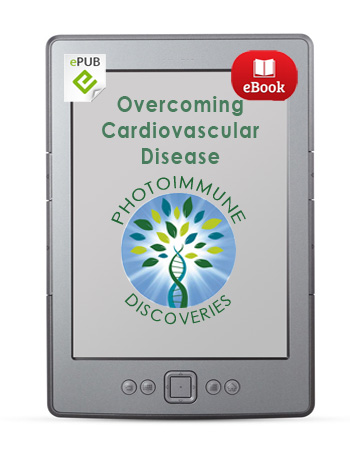
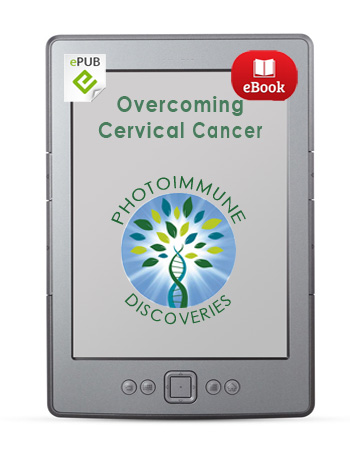
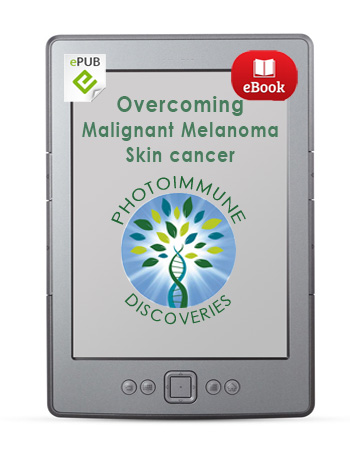
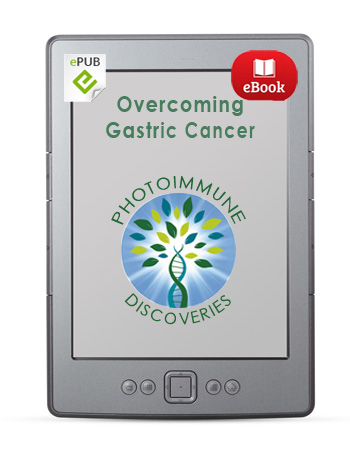
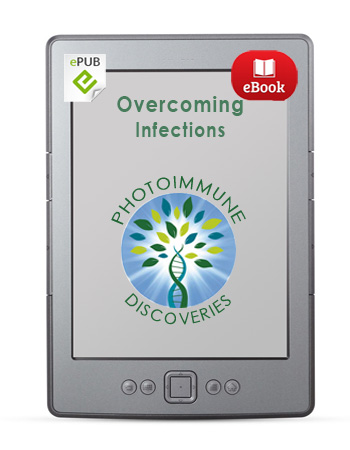

 English
English Français
Français Deutsch
Deutsch Nederlands
Nederlands